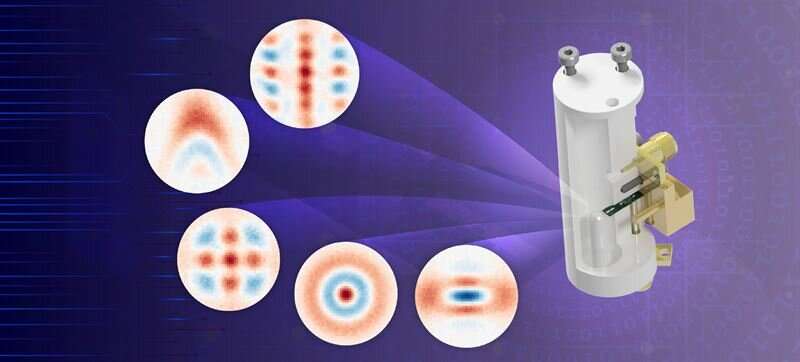
Technology have succeeded in
developing a technique to control quantum states of light in a
three-dimensional cavity. In addition to creating previously known states, the
researchers are the first ever to demonstrate the long-sought cubic phase
state. The breakthrough is an important step towards efficient error correction
in quantum computers.
"We have shown that our technology is on par with the best in the world," says Simone Gasparinetti, who is head of a research group in experimental quantum physics at Chalmers and one of the study's senior authors.
Just as a conventional computer is based on bits that can take the value 0 or 1, the most common method of building a quantum computer uses a similar approach. Quantum mechanical systems with two different quantum states, known as quantum bits (qubits), are used as building blocks. One of the quantum states is assigned the value 0 and the other the value 1. However, on account of the quantum mechanical state of superposition, qubits can assume both states 0 and 1 simultaneously, allowing a quantum computer to process huge volumes of data with the possibility of solving problems far beyond the reach of today's supercomputers.
First time ever for cubic phase state
A major obstacle towards the realization of a practically useful quantum computer is that the quantum systems used to encode the information are prone to noise and interference, which causes errors. Correcting these errors is a key challenge in the development of quantum computers. A promising approach is to replace qubits with resonators—quantum systems which, instead of having just two defined states, have a very large number of them. These states may be compared to a guitar string, which can vibrate in many different ways. The method is called continuous-variable quantum computing and makes it possible to encode the values 1 and 0 in several quantum mechanical states of a resonator.
However, controlling the states of a resonator is a challenge with which quantum researchers all over the world are grappling. And the results from Chalmers provide a way of doing so. The technique developed at Chalmers allows researchers to generate virtually all previously demonstrated quantum states of light, such as for example Schrödinger's cat or Gottesman-Kitaev-Preskill (GKP)states, and the cubic phase state, a state previously described only in theory.
"The cubic phase state is something that many quantum researchers have been trying to create in practice for twenty years. The fact that we have now managed to do this for the first time is a demonstration of how well our technique works, but the most important advance is that there are so many states of varying complexity and we have found a technique that can create any of them," says Marina Kudra, a doctoral student at the Department of Microtechnology and Nanoscience and the study's lead author.
Improvement in gate speed
The resonator is a three-dimensional superconducting cavity made of aluminum. Complex superpositions of photons trapped inside the resonator are generated by interaction with a secondary superconducting circuit.
The quantum mechanical properties of the photons are controlled by applying a set of electromagnetic pulses called gates. The researchers first succeeded in using an algorithm to optimize a specific sequence of simple displacement gates and complex SNAP-gates to generate the state of the photons. When the complex gates proved to be too long, the researchers found a way of making them shorter using optimum control methods to optimize the electromagnetic pulses.
"The drastic improvement in the speed of our SNAP gates allowed us to mitigate the effects of decoherence in our quantum controller, pushing this technology one step forward. We have shown that we have full control over our quantum mechanical system," says Simone Gasparinetti.
Or, to put it more poetically:
"I captured light in a place where it thrives and shaped it in some truly beautiful forms," says Marina Kudra.
Achieving this result was also dependent on the high quality of the physical system (the aluminum resonator itself and the superconducting circuit.) Marina Kudra has previously shown how the aluminum cavity is created by first milling it, and then making it extremely clean by methods including heating it to 500 degrees Centigrade and washing it with acid and solvent. The electronics that apply the electromagnetic gates to the cavity were developed in collaboration with the Swedish company Intermodulation Products.
Research part of WACQT research program
The research was conducted at Chalmers within the framework of the Wallenberg Center for Quantum Technology (WACQT), a comprehensive research program, the aim of which is to make Swedish research and industry leaders in quantum technology. The initiative is led by Professor Per Delsing and a main goal is to develop a quantum computer.
"At Chalmers we have the full stack for building a quantum computer, from theory to experiment, all under one roof. Solving the challenge of error correction is a major bottleneck in the development of large-scale quantum computers, and our results are proof for our culture and ways of working," says Per Delsing.

 Previous page
Previous page Back to top
Back to top







